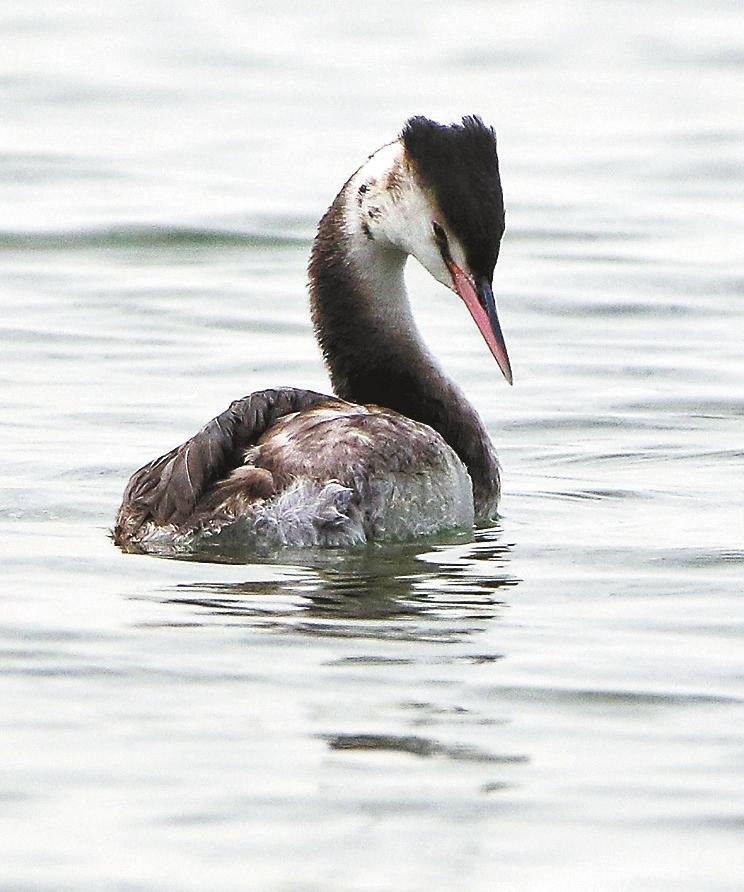
NOT every migration season allows us the pleasure or luck of appreciating the same species arriving in our city. Sometimes we have species that have never come before, and sometimes we have species that used to come but never returned. One of the not-too-common visitors to the shores of Shenzhen Bay is the majestic great crested grebe (Podiceps cristatus), a member of the highly diving-specialized grebe family. Great crested grebes can grow up to 60 centimeters in length. During the breeding season, males can display a beautiful black cap that ends in a fascinating crest they clearly show when looking for a mate to couple with, and a reddish-brown set of feathers on the head. The neck is a dull gray coloration that becomes darker as it approaches the upper parts of the body, combined with a brownish coloration that fades as it goes down to the bird’s lower body. The beak is long and may have different colorations ranging from light pink to blackish, and there is a black line that comes from the beak toward the eyes. Like other grebes, the great crested grebe is specialized in diving without the need to thrust into the water. They float and swim in the water and, from their position, perform a short leap into the water and begin diving in search of small water animals like fish, shrimp, or mollusks that they pursue underwater for as long as 30 seconds before coming back up for air. Their breeding season goes from April to July when they build floating platforms using aquatic plants upon which they lay up to five eggs per clutch. They incubate them for at least one month; another two to three months are neededbefore the newborns are ready to leave the nest. These fascinating animals are not endangered. They are looking for warm places to spend their winters. Let’s continue providing more suitable areas in our city where this and other migratory species can rest during their long journeys. | 
